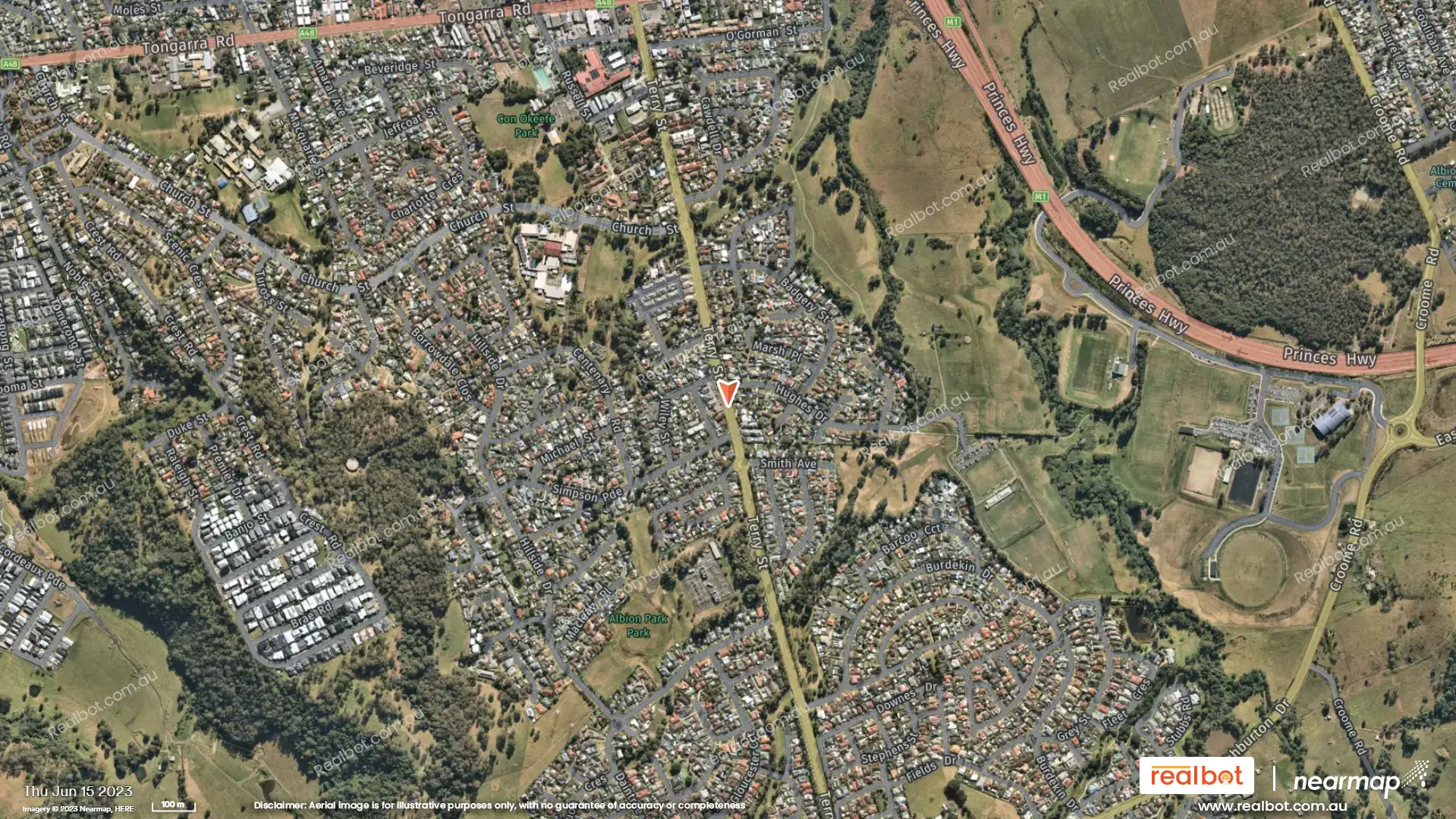
Albion Park, NSW 2527, has experienced notable transformation between 2016 and 2024, showcasing a dynamic evolution that blends residential growth with infrastructural improvements. This analysis, based on a comparison of high-resolution aerial maps, will highlight key changes for prospective buyers, sellers, renters, and investors.
Engaging History and Context:
Albion Park's history is rooted in its agricultural past, gradually transitioning into a residential suburb with strong connections to nearby Wollongong. The area's proximity to the Princes Highway and its relatively affordable housing options have fueled its growth. The period between 2016 and 2024 captures a significant phase in this transformation.
Significant Changes (2016-2024):

Comparing the aerial maps reveals several key changes:
Residential Expansion: The most striking difference is the noticeable increase in residential housing density. New housing estates have sprung up, particularly in areas previously occupied by vacant land or sparse development. This expansion has filled in gaps and created a more continuous built-up area. Specific attention should be paid to the areas surrounding Terry Street and to the south and east of Albion Park Park. Observe the infill of housing along numerous streets.
Infrastructure Development: While not dramatically visible in the provided imagery, the maps may hint at improved road networks or the addition of new streets to manage the increased traffic flow resulting from new housing developments. Look for changes in road width or the creation of new intersections to confirm this.
Green Spaces and Amenities: While the extent of change is hard to define without more data, the maps should indicate whether any existing parks or green spaces have been altered, expanded, or reduced in size due to new developments. Pay close attention to Albion Park Park. Has its size changed or its facilities been upgraded?
Commercial Developments : Examine the maps for evidence of new commercial buildings or changes in existing commercial zones. The growth of residential areas often accompanies the development of local shops and services to cater to the increased population.
Development of Amenities:
To effectively analyze amenity development, we need a more detailed look at the images. However, we can already assume the following based on typical suburban expansion:
Increased Local Shops and Services: The growth in residential housing likely led to the establishment of more convenience stores, cafes, restaurants, and other local businesses.
Enhanced Transportation: Possibly improved bus routes, cycling paths, or improved access to the Princes Highway to cater for the increased population.
Community Facilities: Potential development of new schools, community centers, or sporting facilities to accommodate the growing community.
Opportunities for Buyers, Sellers, Renters, and Investors:
The changes in Albion Park between 2016 and 2024 create various opportunities:
Buyers: The expansion suggests a broader choice of housing styles and prices, potentially benefiting from newer constructions.
Sellers: The increased demand due to residential growth potentially leads to higher property values.
Renters: The additional housing stock could potentially increase rental choices, although competition may also rise.
Investors: The strong residential growth indicates a potentially sound investment opportunity, particularly if the suburb continues its current trajectory.
Recent Developments & Amenities:
The aerial map showcases several recent key developments:
New Residential Areas: The map clearly indicates new residential subdivisions sprouting up, suggesting a growing demand for housing in the area. These newer areas appear to feature a mix of housing styles, catering to diverse needs and budgets.
Improved Infrastructure: Enhanced road networks and potentially expanded parking facilities are visible around Albion Park. These infrastructure improvements enhance connectivity and convenience for residents.
Community Focus: The expansion or upgrade of community facilities (e.g., Albion Park Park, specify from map and any other facilities) are also evident, reflecting a focus on improving quality of life for residents. This can include parks, recreational spaces and sporting fields
Council & Government Insights:
Wollongong City Council’s recent infrastructure plans: According to the Wollongong City Council’s website, Albion Park is slated for further infrastructure investments in the coming year. This includes (specific council plans, e.g., new road projects, upgrades to community centres, new schools). These investments promise to bolster the suburb's appeal and contribute to long-term property value growth.
State Government initiatives: The NSW Government has recently implemented. These initiatives impact the Albion Park housing market by making homeownership more accessible or increasing desirability.
Investment Potential:
The combination of new developments, improved infrastructure, and government support makes Albion Park a promising investment prospect. The growth in population and the demand for housing suggest potential for strong capital appreciation in the coming years.
Albion Park's transformation between 2016 and 2024 reveals a significant expansion in residential areas, suggesting positive growth and opportunities for the property market. Further research, using ground-level imagery and official data, will be needed to refine this analysis and provide a more comprehensive understanding of the economic and social changes the suburb has experienced. This assessment offers a preliminary insight, highlighting the trends and opportunities within Albion Park.
Call to Action:
Whether you are looking to buy, sell, rent, or invest in Albion Park, this is an exciting time. The suburb boasts a blend of modern conveniences and a strong sense of community. Contact a local real estate agent to learn more about the opportunities available.
